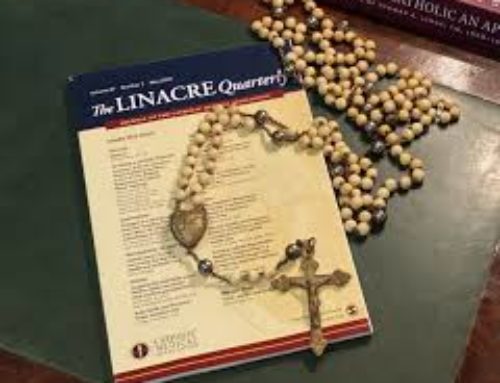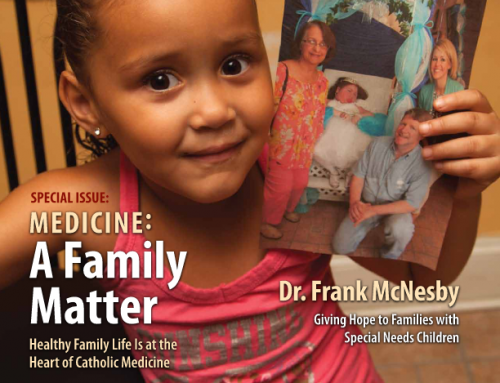http://www.afterabortion.com/pass_details.html
http://www.projectrachelkc.com/post-abortion-syndrome/
http://bjp.rcpsych.org/content/199/3/180.full?sid=8ec2d14a-fe43-4803-9ec6-1b3eee386c8f
See also article by Anne Lastman
POST ABORTION TRAUMA.
© Anne Lastman, 2011
Post Abortion Syndrome (PAS) first proposed (Rue, 1981) as a variant of posttraumatic stress disorder (PTSD) is today recognised as a traumatic experience having deleterious effect for some women. (Ney, Fung, Wickett & Beaman-Dodd, 1994). In a recent study by Major et al (2000) it was acknowledged by these researchers that PAS was diagnosed in a of the sample population of women who’d had abortions in the immediate past two years. In a population like Australia where 90- 100,000 abortions annually carried out,(ABS) then this represents, over the last twenty years, a substantial number of women suffering PAS. In another study by Söderberg et al.(1998) the research group found that 60 percent of the sample population of 854 women experienced some emotional distress with 16 percent so severe as to require psychiatric attention
Henry David, and colleagues (1981) record study of 1.1 million Danish women, found that those who aborted were 53 percent more likely than delivering women to be admitted to psychiatric facility. Further, women who aborted were more than twice as likely as women in the general public to be admitted to psychiatric hospital. However, women who aborted and were separated, divorced, widowed were four times as likely to be admitted to a psychiatric hospital.
In a study by Major and colleagues (1994), which was published in the American Journal of Psychiatry, it was found that up to 10 percent of post aborted women were classified as having developed serious psychiatric complications. Additionally, Zolese and Blacker (1992) in their review of literature found that psychological disturbances occur in relation to abortion and appear marked, severe or persistent in approximately 10 percent of noted cases.
In 1994, the UK Parliamentary Commission of Inquiry into the effects of abortion on women found that 87 percent of women it surveyed had experienced some long-term emotional consequences and out of these 15% actually requiring psychological help. Barnard, (1990) reported that 984 women were randomly selected for follow up from their abortions, 60 percent gave wrong information to the abortion facility, so sample available was of 80 aborted women, (3-5 years post abortion) 18 percent of this sample met the full diagnostic criteria for Post Traumatic Stress Disorder and of these 46% displayed acute stress reactions to their abortions.
The abortion suicide connection has been in medical literature for approximately twenty years and in a large study published in British Medical Journal (Dec.1996) researchers found that the suicide rate after termination of pregnancy was three times the general population rate and six times higher than that associated with giving birth. “Suicides are more common after miscarriage and especially after an induced abortion than in the general population.” (pp1431-1434). Miscarriages, later infertility, birth or death of significant others are known to be triggers for the onset of PAS. In relation to the abortion suicide connection reported in the Commonwealth Department of Human Services and Health, youth suicide paper, it is was noted that Ireland, which currently is listed as having the lowest abortion rate in 27 developed countries has also the lowest reported suicide rate for females within the age ranges of 15-24. David Reardon’ s study (1987) of over 100 women who suffered post abortion trauma, found that 60 percent had experienced suicide ideation, 28 percent were attempters and 18 percent were multiple attempters. Further, Campbell and colleagues (1988), Garfinkel and colleagues (1986) also found that suicide ideation was a strong component of post abortion experience.
Clinical depression appears to have increased within our community and in a study by Reardon & Cougle (2002) reported in the British Medical Journal, it was found that women who abort a first pregnancy are at greater risk of developing long term clinical depression compared to women who carry through the pregnancy with even with an unintended pregnancy. Dr Anne Speckhard, (1987) in her study also found that the abortive women who participated reported long-term grief reactions. Her study found 100 percent response to depression, 92 percent to anger, 92 percent guilt, 89 percent fear of discovery, 81 percent pre occupation with the aborted child, 81 percent low self esteem, 73 percent suffered flashback, 69 percent sexual dysfunction, 65 percent suicide ideation, and 61 percent increased alcohol intake. Similar results were elicited by Reardon (1987) and Ney, & Wickett (1989).
In what appears to be an alarming development it now appears that the abortion breast cancer link has been in medical literature for at least 40 years with a more recent meta analysis (Brind, Chinchilli, Severs, Summy-Long, 1996; Daling et al 1994.) of all worldwide data spanning three continents implicated abortion as a significant independent risk factor in developing early breast cancer. The findings of the meta analysis demonstrate that abortion is found to be a causal factor in the development of breast cancer with a statistically significant 30% increase in those exposed to induced abortion. More alarming is the finding that some studies within the meta analysis showed an increased risk of up to 80 % in women who have a family history of breast cancer.
It has been argued that controlled and wanted pregnancies will mean no unwanted child and no battered, abused, neglected or psychologically abandoned children. Yet the reality is that there is no evidence to support this. However, there is evidence that child abuse is increasing (1981, Ney, 1997). A Norwegian study has found that the lesser type of child abuse has increased markedly and major type of child abuse has doubled over the past 5-year period. Child abuse is the result of many factors, however one of these factors is poor bonding between mother and infant (Ten Bensel & Paxson 1977, Ney, 1997) The bonding process may be disturbed by a number of factors including post partum depression, and further there is evidence that women who had previously undergone an abortion procedure became depressed during the next wanted pregnancy. It was found that peri natal losses interfere with woman’s preparation (psychologically) for the next pregnancy thus it appears that abortion of one pregnancy interferes with bonding of the ensuing child (Colman & Colman, 1971; Ney, 1997).
A plethora of studies has shown that indeed abortion causes psychological sequelae. That it is more damaging to women than presently recognised and accepted. Abortion is and remains a disenfranchised (Doka, 1989) procedure because it is still taboo and not within the range of normal accepted behaviour within society
The sudden realisation that the abortion has meant a death of one’s own child (foetus) threatens the individual’s own idea of self worth (Reardon, 1987). One’s own idea that the world is benevolent (Janoff-Bulman, 1989). That people (including the medical profession-abortion provider) are benevolent (Janoff-Bulman, 1989, Parkes, 1988) and the impact of such an understanding complicates further their grieving process (Sanders, 1988). This is due to the “human element” aspect of the stressor, abortion (DSM III R-1987) that is, the decision-making involved in this event (Friedman et al. 1974). To complicate further the grief process, (Sanders, 1988; Prigerson et al., 1999) and assist to alleviate the possibility of PTSD, abortion compromises the normal rituals which society has developed as an aid to detachment (Freud, 1917; McAll & Wilson, 1987) from the lost one and begin the process of living without that ‘other’
This type of bereaved individual may not receive societal or communal support because abortion remains contentious, painful, and shameful and thus disenfranchised (Doka, 1989) and by its very nature will have its supporters and detractors. Indeed with an abortion there will not be the formal leave taking because of the manner of disposal of foetus and the reality of the subject remaining taboo. This then disenfranchises (Doka, 1989) the experience and the woman’s grief responses and contains it within the knowledge of the aborted woman and perhaps one or several other individuals. (Raphael & Misso, 1993).
Understanding post abortion trauma and grief and the social context of this experience Raphael et al., (1996) states “provision of any preventive intervention needs to take account of the atmosphere and social processes that emerge following the traumatic event” (p464). For the post abortive population the atmosphere and social processes are those of silence and because of this, as Raphael et al continue, “often traumas do not provoke widespread interest particularly if only one or a few people are involved in each trauma.” (p465). The experience of abortion is usually an individual experience, and a politicised experience, and because of this, the mental health profession is slow in its interest in this area even though collectively post abortive women and those experiencing psychological sequelae is substantial. Indeed the number of traumatised women (of some men, Shostack, 1984.) exposed to this type of trauma is larger than any of the large scale disasters “and for this reason individual traumas present a greater public health challenge than disasters do.” (Norris, 1992)
The degree of public support and the acknowledgement that the experience was a traumatic one and the support community offers may be a significant factor in the healing process or alternatively absence of support adding more trauma to the already traumatised (Raphael, 1996). This concurs with Doka’s (1989) findings that abortion being a hidden and unspoken about loss ensures that the event remains unvalidated and therefore unsupported, contributing to the added severity of the trauma.
Abortive traumatised women live within a societal context which is not necessarily negative but ambivalent and as such remain part of a group of traumatised but not recognised (Doka, 1989) as such. This is because their experience and subsequent needs are not identified as those of someone who has been exposed to a traumatic event. This then leads to the misdiagnosis, wrong diagnosis and unnecessary suffering because interventions have not been devised and put in place. Abortion, a stressor outside of the normal day-to-day experience (DSM-III R, 1987) and a contributing factor in the decline in mental health of women, has little attention paid to it and no intervention strategies in existence.
Community education of the possible effects of abortion, both to the woman, man, family and society, cannot take place when the procedure is enshrined in law. Because if it is “enshrined in law” it is automatically assumed that it is a “good thing” and therefore understanding of its effects becomes impossible.
Public education via the medium of schools, community programs, health department, Cancer Council, remains in slow motion for the reasons of the ongoing debate and disagreement over the very existence of this syndrome (PAS). There is ongoing debate on the abortion breast cancer link (Brind, et al 1996) , abortion suicide link (Gissler et al. 1996, David, et al., 1981) abortion substance abuse link, (Reardon, 1987) abortion and relationship breakdowns link (Rue, 1985; Reardon,1987: Ney, 1997; ). Whilst these debates continue only limited exposure of this information is possible as formal inclusion into both secondary and tertiary education system cannot be sanctioned as indeed with other mediums of disseminating information.
Improving public knowledge of those in the community to deal with or even recognize and support those traumatised, and where necessary refer to professionals also becomes difficult because of the nature of the distress and the need for this experience (abortion) to be kept a family secret (Webster, 1991) This is disturbing as Nagy-Boszmormenyi (1983) posited a concept, which he termed “invisible loyalty” which he describes as a continually repeated action in order to achieve reparation, or perhaps as Schutzemberger, (1997) calls the Anniversary Syndrome.” Abortion is an issue, which has attached to it “invisible loyalty” and as such becomes difficult to deal with, but further to devise preventive education programs for dissemination within the local community and the broader human community.
Whilst abortion has all the hallmarks of a traumatic experience and the possible development of PTSD, a major mental health disorder, societal knowledge, consensus and a uniform response remain elusive. Again whilst post abortion trauma is a serious mental health issue, outside of the mental health profession it remains little known and understood, and within the mental health profession its existence is shrouded in mystery, still to be fully accepted, though of recent times, the venerable and esteemed Lancet Journal has acknowledged the need for care viz.
Tuesday September 2, 2008
Lancet Journal Challenges the APA on Need for Counselling after Abortion
“The fact that some women do experience psychological problems after a termination should not be trivialized. … Women choosing to terminate must be offered an appropriate package of follow-up care, which includes psychological counselling when needed.”
By Kathleen Gilbert
LONDON, September 2, 2008 (LifeSiteNews.com) – The Lancet, one of the most reputable medical journals in the world, has published a report that opposes the American Psychological Association’s (APA) dismissal of abortion-related psychological trauma, and calls for post-abortion counselling as an important part of patient care, reports BioEdge.org.
The Lancet states that, “The fact that some women do experience psychological problems after a termination should not be trivialized. … Women choosing to terminate must be offered an appropriate package of follow-up care, which includes psychological counselling when needed.”
Today we know that the immediate response in the aftermath of a traumatic incidence and the speed and quality of care is believed to reduce the likelihood of future mental health problems, and to this end, crisis intervention programs are of value (Raphael, et al. 1996) However, response to the traumatic experience of someone who has undergone a procedure which challenges their intrinsic worth, and whilst having “ambivalent” feelings, or religious values conflicts, and from this develops long term mental health problems, becomes difficult. However preventive measures in the form of knowledge about the procedure, about the likelihood of possible future difficulties, knowledge about the possibility of increased risks in breast cancer and psychological dysfunction; these measures, which can assist the women to carefully think about this life altering procedure, will be of value..
In conclusion the mental health of women has declined and continues to decline. Breast cancer in women (especially younger women) is rising. Suicide amongst the youth globally and in Australia is amongst the highest in the world. Substance abuse and eating disorders abound and marriage and news in the area of family breakdowns is pessimistic. It is time that the contentious issue of abortion and its effects on the mental health of women, men and society is made public and knowledge about its effects is increased. It took many years for Post Traumatic Stress Disorder to be recognised as categorisable condition so it is conceivable that it will take time to also reach a consensus about the traumatic effects of abortion. To identify high-risk women and advise them of the potential risks involved in their decision. At this time abortion policy is built upon the belief that abortion is a “safe” procedure. However, if this is the case then policy must be reviewed as it is becoming increasingly clear that abortion is not a safe procedure either physically or mentally, and indeed it appears a dangerous procedure to women, men, children and society. IT is of utmost importance to encourage professionals and those in clinical practice to inform female patients presenting for abortion about the possibility of post abortion trauma, psychosis, grief, and assistance in the training of health professionals in the skills of diagnosis and treatment of Post Abortion Syndrome, would go a long way towards redeeming the existing clime.
As a final thought the abortion decision is always situation specific, and made at a time when a woman is most vulnerable, confused and depleted of energy, and the difficulties which are encountered, or considered as difficulties and therefore requiring abortion as a solution, will not be thought so in a different time, however, the decision once made cannot be reversed, and the anguish of regret also cannot be reversed.
References:
American Psychiatric Association: Diagnostic and Statistical Manual of Mental Disorders, 3rd ed. Rev., Washington D.C., APA Press, 1987.
Angelo, E.J. (1992) Psychiatric Sequelae of Abortion: The many faces of post abortion grief. Linacre Quarterly, 59 (2) pp69-80
Barnard, C. (1990) The Long Term Psychological Effects of Abortion. Portsmouth, NH: Institute for Pregnancy Loss.
Brind, J., Chinchilli, V.M., Severs, W.B., & Summy-Long, J. (1996). Induced abortion as an independent risk for breast cancer: a comprehensive review and meta-analysis. Journal of Epidemiology and Community Health, 50: pp 481-496.
Campbell, N., Franco, K., & Jurs, S. (1988) Abortion in Adolescence. Adolescence, 23, 92, pp 813-823.
Colman, A.D. & Colman, L.L. (1971) Pregnancy: The Psychological Experience. New York: Herder & Herder.
Commonwealth Department of Human Services and Health. Youth Suicide in Australia. A Background Monograph.
Daling, J. (1994) Risk of Breast Cancer Among Young Women: Relationship of Induced Abortion. Journal of the National Cancer Institute, November 1994.
David, H., Rasmussen, N. & Holst, E. (1981) Postpartum and Postabortion Psychotic Reactions. Family Planning Perspectives, 13, pp 88-91
Doka, K (1989). Disenfranchised Grief. Lexington, MA: Lexington Books.
Fergusson, DM, Horwood, LJ, Ridder EM. Abortion in young women and subsequent mental health. Journal of Child Psychology & Psychiatry, 2006; 47 (1): 16-24.
Freud, S. (1917) Mourning and melancholia. Standard Ed. Vol. 14, London: Hogarth Press.
Friedman, C.M. Greenspan, R., Mittleman, F., (1974) The Decision Making Process and the Outcome of Therapeutic Abortion. American Journal of Psychiatry 131, (12) pp1332-1337
Gissler, M. Hemminki, E, Lonnqvist, J. Suicides after pregnancy in Finland, 1987-1994: register linkage study, British Medical journal, Dec. 1996. Vol. 313 pp1431-34
Jacobs, S. & Prigerson, H. (2000) Psychotherapy of traumatic grief: A review of evidence for psychotherapeutic treatments. Death Studies, 24, pp 479-495
Janoff-Bulman, R, (1989). Assumptive worlds and the stress of traumatic events: Applications of the schema construct. Social Cognition, 7 (2), 113-136
Major, B., Cozzarelli. C., Cooper, M.L., Zubek, J., Richards, C., Wilhite, M., Gramzow, R.H. (2000) . Psychological responses of women after first trimester abortion. American Journal of Psychiatry. 57 (8), pp 777-784.
Mawson, D., Marks, I.M., Tramm, L., & Stern, R.S. (1981). Guided mourning for morbid grief: A controlled study. British Journal of Psychiatry, 138, pp 185-193.
McAll, K. & Wilson, P. Ritual mourning for unresolved grief after abortion. Southern Medical Journal, vol. 80, 1987.
Ney, P. G. (1997). Deeply Damaged. An Explanation for the Profound Problems Arising from Infant Abortion and Child Abuse. For International Institute for Pregnancy Loss and Child Abuse Research and Recovery. Canada: Pioneer Publishing Co. Ltd.
Nagy-Boszmormenyi, I. Lealtades Invisibles (1983) Editors Amorrortu-Buenos Aires.
Ney,P.F., Fung, T., Wickett, A.R. & Beaman-Dodd, C. (1994). The effects of pregnancy loss on women’s health. Social Science Med. 38 (9), pp1193-1200.
Ney, P.A., & Wickett, A.R. (1989). Mental health and abortion: Review and analysis. Psychiatric Journal of the University of Ottawa, Vol. 14, No. 4. pp 506-516.
Norris, F.H. (1992). Epidemiology of Trauma: frequency and impact of different potentially traumatic events on different demographic groups. Journal of Consulting and Clinical Psychology, 60 (3), pp 409-418
Parkes, C.M. (1988). Bereavement as a psychosocial transition: Processes of adaptation to change. Journal of social issues, 44, 53-65.
Prigerson, H.G., Shear, M.K., Jacobs, S.C., Reynolds, C.F., Maciejewski, P.K., Pilkonis, P.A., Wortman, C.M., Williams, J.B.W., Widiger, T.A., Davidson, J., Frank, E., Kupfer, D.J., & Zisook, S. (1999). Consensus criteria for traumatic grief: A preliminary empirical test. British Journal of Psychiatry, 174 pp67-73.
Raphael, B. (1983) The Anatomy of Bereavement. New York: Basic Books.
Raphael, B. (1986) When Disaster Strikes: How Individuals and Communities Cope with Catastrophe. New York: Basic Books.
Raphael, B. & Misso, V. (1993) Traumatic Stress and Sudden Infant Death.
2nd SIDS International Conference. Perinatology Press.
Raphael, B., Wilson, J., Meldrum, L. & McFarlane, A.C. (1996) Acute preventive interventions. In B.A. van der Kolk, A.C. McFarlane & L. Weisarth (Eds.) Traumatic Stress: The Effects of Overwhelming Experience on Mind, Body and Society. New York: Guilford Press.
Reardon, D.C. (1987) Aborted Women Silent No More. Chicago: Loyola University Press:
Reardon, CD.C. & Cougle, J.R. Depression and unintended pregnancy in the National Longitudinal Survey of Youth: A cohort study British Medical Journal, 324,
Pp 151-152. Full text available at www.bmj.com
Report by the Commission of Inquiry into the Operation and Consequences of the Abortion Act (June 1994). The Physical and Psycho-Social effects of abortion on Women.
Rue, V. (1981). The Psychological Realities of Induced Abortion. Post Abortion Aftermath. Washington DC: Sheed & Ward.
Rue, V. (1985). Abortion in Relationship Context. International Journal of Natural Family Planning, 9, pp95-121.
Sanders, C.M. (1988). Risk factors in bereavement outcome. Journal of Social Issues, 44 97-111.
Schutzemberger, A.A. (1997) Meus Antepassados. Editora Paulus.
Shostack, A., McLouth, G. (1984) Men and Abortion: Lessons, Losses and Love.
New York: Praeger.
Speckhard, A. (1987) Psycho social Stress Following Abortion. Kansas City: Sheed & Ward.
Speckhard, A. (1997) Traumatic death in pregnancy: The significance of meaning and attachment. In C.R. Figley, B.E. Bride & N. Mazza Eds.) Death and Trauma: The Traumatology of Grieving. Washington D.C: Taylor & Francis. Pp 67-100.
Söderberg, H., Andersson C., Janzon, L., & Sjöberg, N-O. (1998). Emotional distress following induced abortion: study of its incidence and determinants among abortees in Malmo, Sweden. European Journal of Obstetrics & Gynaecology and Reproductive Biology. 79, pp173-178.
Ten Bensel, R.V. & Paxson, C.L. Child abuse following early postpartum separation.
Journal of Paediatrics, 90: 490-491, 1977.
Webster, H. (1991). Family Secrets. Reading, MA: Addison-Wesley Publishing Co.
Wilmouth, G. (1992) Abortion, Public Health Policy and Informed Consent Legislation. Journal of Social Issues, 48 (3) p5
Zolese, G. & Blacker, C. (1992) The Psychosocial Complications of Therapeutic Abortion. British Journal of Psychiatry, 160, pp742-749.







